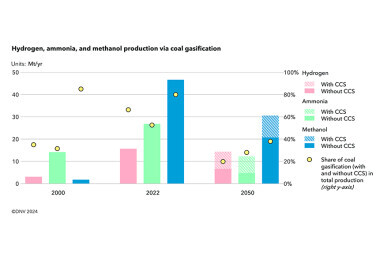Green energy
New insights into China’s complex energy landscape and its enormous green energy shift
Apr 23 2024
DNV's Energy Transition Outlook offers a deep dive into China's intricate energy landscape, shedding light on its monumental shift towards green energy. While the report underscores China's strides in renewable energy adoption and technology export, it also highlights the enduring presence of fossil fuels in its energy mix. According to DNV's projections, fossil fuels are poised to still make up 40% of China's energy composition by 2050.
Energy self-sufficiency stands as a cornerstone of Chinese energy policy, though only partially attainable. The nation's power sector is swiftly shedding its reliance on coal in favour of domestically sourced renewables, with domestic coal production expected to meet most remaining demand segments by 2050. However, reliance on imported oil and gas is set to persist. Despite a projected halving of oil consumption by 2050 from its peak in 2027, usage in petrochemicals and heavy transport will endure, with 84% of oil needs and 58% of natural gas requirements reliant on imports.
The robust support of policies is evident in the rapid adoption of green technologies. China, already a frontrunner in renewable energy investments, is on track to quintuple renewable energy installations by 2050. Wind energy, which represented a mere 1% of China's electricity generation in 2010, has surged to become the nation's second-largest electricity source after coal and hydropower, supplying 9.4% of total electricity in 2023. By mid-century, it is poised to claim the title of the world's largest wind market. Similarly, solar energy's share has grown from less than 1% in 2015 to 5% today, with both solar and wind projected to contribute 38% each to electricity production by 2050.
Remi Eriksen, Group President and CEO of DNV, lauds China's remarkable progress, noting its visible strides in decarbonisation and clean technology development. However, he underscores the potential for further acceleration of the transition away from fossil fuels, advocating for a swifter trajectory towards net-zero emissions by 2050.
China's energy consumption is anticipated to peak by 2030, followed by a 20% reduction by 2050, driven by electrification and energy-efficiency enhancements, as well as demographic shifts including a projected decrease of 100 million in population. From contributing to a third of global energy-related CO2 emissions in 2023, China's share is forecasted to decrease to a fifth by 2050, with emissions dropping by 70%, aligning closely with its goal of achieving carbon neutrality by 2060.
Events
Aug 24 2025 Stockholm, Sweden and online
Aug 27 2025 Busan, South Korea
Sep 02 2025 Mexico City, Mexico
Sep 02 2025 Mexico City, Mexico
Sep 09 2025 Moscow, Russia








-from-Landia-are-on-their-way-to-Estonia.jpg)







